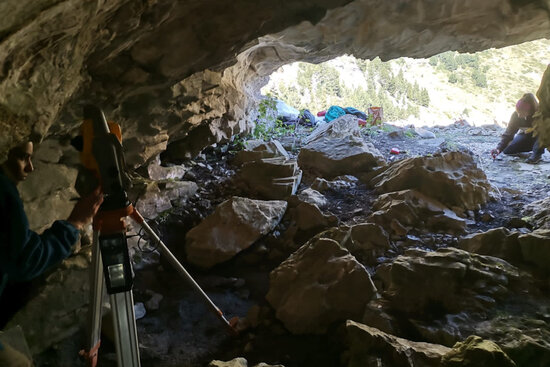Highest prehistoric cave in Pyrenees reveals secrets
5,500-year-old fragments of precious mineral malachite, lithic industry, ceramics and bones discovered on latest dig

The Forat de l'Embut cave, located at an altitude of 2,235 meters, is the highest prehistoric cave with signs of human occupation discovered in the Pyrenees to date.
According to the latest archaeological finds, ancient human activity that took place in the cave includes the manipulation of malachite, a precious, green mineral used for ornamental objects as well as the extraction of copper for metallurgical production.
The cave is situated in a strategic enclave, halfway between the scenic Vall de Núria (Núria valley) and Puigmal mountain, in the municipality of Queralbs.
At the head of the research is a team from the Catalan Institute of Human Paleoecology and Social Evolution (IPHES-CERCA) and the Prehistory Area of the Rovira i Virgili University (URV).
This summer's dig - the third at the site after previous ones in 2012 and 2018 - also led to the discovery of remnants and artifacts from the lithic industry and ceramics dating from more than 5,500 years ago. They are believed to have belonged to the first shepherds that settled in the eastern Pyrenees.
Precious mineral
Fifty pieces of malachite - a precious mineral valued for its green color - were also uncovered, confirming that the cave was used as a place to work with and manipulate the material, which was important in prehistoric times.
"It was highly valued by prehistoric groups, although its distribution is scarce in the area," according to Carles Tornero, the co-director of the site, along with Prehistory professor and anthropologist Eudald Carbonell.
This year an area of 8m2 has been excavated (the cave is more than 100m2) and more than one thousand fragments have been recovered, such as pieces of handmade ceramic vessels, remnants of stone toolmaking, fragments of carbonized vegetable fuel used in homes and also bones of animals that had been eaten.
The discovery of these materials have confirmed that the cave was used more than 5,500 years ago, from the Neolithic to the Bronze Age.
Brown bears
Bone fragments of Pyrenean brown bears (ursus arctos) have also been discovered. Researchers say that they could date from a time before the arrival of the first shepherds more than 5,500 years ago and that they have a "very significant" paleontological value for the study of wildlife in the Pyrenees.
Historically, Cave 338 (as it is also known) has been used as a natural refuge for shepherds accompanying their herds over the area's extensive meadows during the summer.